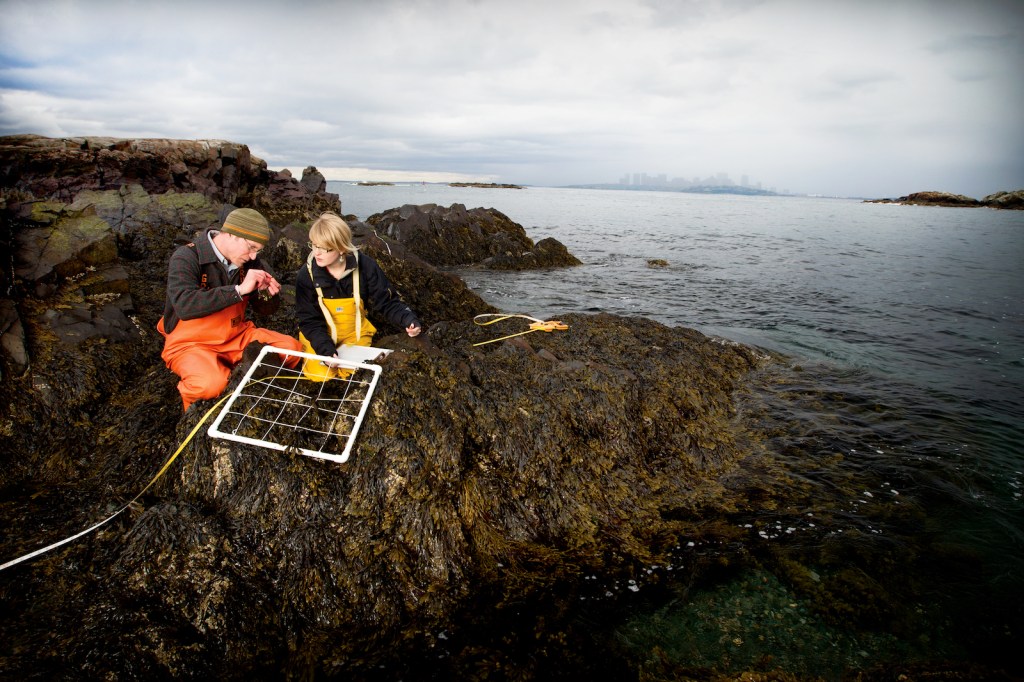Marine Science Center Expansion FAQ

Northeastern University’s Marine Science Center in Nahant, Massachusetts has been a hub for groundbreaking research and discovery for over 50 years. World-class researchers in the fields of marine and environmental science and coastal sustainability are studying the oceans and developing engineering solutions to create a sustainable and resilient planet. In order to enhance the impact of this critically important work, Northeastern is planning to expand the research and teaching capacity of its Marine Science Center.
There has been significant confusion around the planned expansion. Here, we provide answers to the most frequently asked questions. This is the first in a series.
March 17, 2018
Why is Northeastern seeking to expand its Marine Science Center at Nahant?
Over the last 50 years, our researchers in Nahant have conducted groundbreaking work in the fields of marine and environmental science and coastal sustainability. This important work continues to have positive impacts on coastal regions around the world.
Today, the threats posed to coastal communities, including storm surge and sea-level rise, demand that Northeastern enhance its capacity to develop scientific knowledge and engineering solutions for a sustainable planet, and to educate the next generation of innovators that can continue this critically important work. To do that effectively, we must expand the research and teaching capacity of the Marine Science Center.
What is the purpose of the expansion?
It is entirely focused on adding research and teaching space—precisely the same activities that we’ve been engaged in since we opened the Marine Science Center in 1967. Because our mission and its impact are so important to society, we plan to continue recruiting outstanding new faculty in a variety of fields, including climate-change mitigation and coastal sustainability.
How will that affect the number of Northeastern personnel in Nahant?
Currently, there are 20 faculty, 20 staff, and 11 postdoctoral scientists working at the Nahant campus. In addition, 45 to 60 undergraduate and graduate students commute two to three days per week via shuttle bus from the Boston campus for classes and research. The proposed expansion is projected to increase the daily onsite population to 40 faculty, 25 staff, and 22 postdoctoral scientists.
How will the increase in the number of scientists and staff affect the parking situation?
Any additional parking will be kept within the confines of the current campus. There will be no need for our faculty and staff to park on the street.
Does the project include dorms?
No, we are not considering housing of any kind.
How large will the proposed building be?
There has been significant confusion about the size and scope of what is being proposed. The preliminary design—for a two-story building plus a basement level—would expand the footprint of the existing research facility by 15,000 square feet and the total amount of research space by 60,000 square feet. By pushing the building into the hill and against the existing bunker, we effectively hide as much of the building as possible. This design is the direct result of our commitment to keeping the building’s profile low, while still enabling the critical research of the Marine Science Center.
When did Northeastern first decide to undertake this project?
Prior to 2017, there were sporadic, very broad discussions about a new Marine Science Center research facility in Nahant. Only in January 2017 did university leaders start to focus in earnest on actual concepts for a new research building and the financial resources required to support it. In June 2017, we initiated the process of securing project cost estimates, a necessary factor in any decision to proceed. It was not until December 21, 2017 that Northeastern’s senior leadership authorized a preliminary building design.
What is the sea water intake system component of this project?
The university has withdrawn its application to expand its existing seawater intake system. Should Northeastern seek to move ahead with the project, we will work closely with local lobstermen to avoid any impacts to the local fishery. The health of fisheries locally and around the world is central to the research mission of the Marine Science Center.
How will Northeastern’s project impact the environment of East Point?
The university’s expansion proposal remains in development and has not yet reached final design. No permit application is currently pending before the town or any other agency. Therefore, it is too early in the design process to fully understand the potential impacts on the environment or the community. Northeastern is committed to a final project design that has the least possible adverse impacts to the ecology of East Point. And historically, Northeastern has invested in restoring East Point from the impact of prior development there. The university will work collaboratively with Nahant residents to ensure that the Marine Science Center expansion project poses only minimal and short-term disruption to the community.
Why should Nahant residents trust the university? What has Northeastern ever done for the town?
For more than 50 years, Northeastern has been a collaborative partner with the Town of Nahant. This has included university funding for local educational programs, Marine Science Center tours and learning opportunities for K-12 students, and scholarships for Nahant residents who attend Northeastern. The university has also worked with the town on conservation and restoration projects, including joint advocacy on shared environmental issues such as cruise ship discharge in Boston Harbor. Because the university greatly values these strong partnerships, many months ago we reached out to Nahant elected officials in good faith to discuss our interest in expanding our research capabilities at the Marine Science Center. Today, we are expanding these communications to reach residents directly.
This is the first in a series of regular updates about the proposed expansion project. For more information, please contact msc@northeastern.edu.